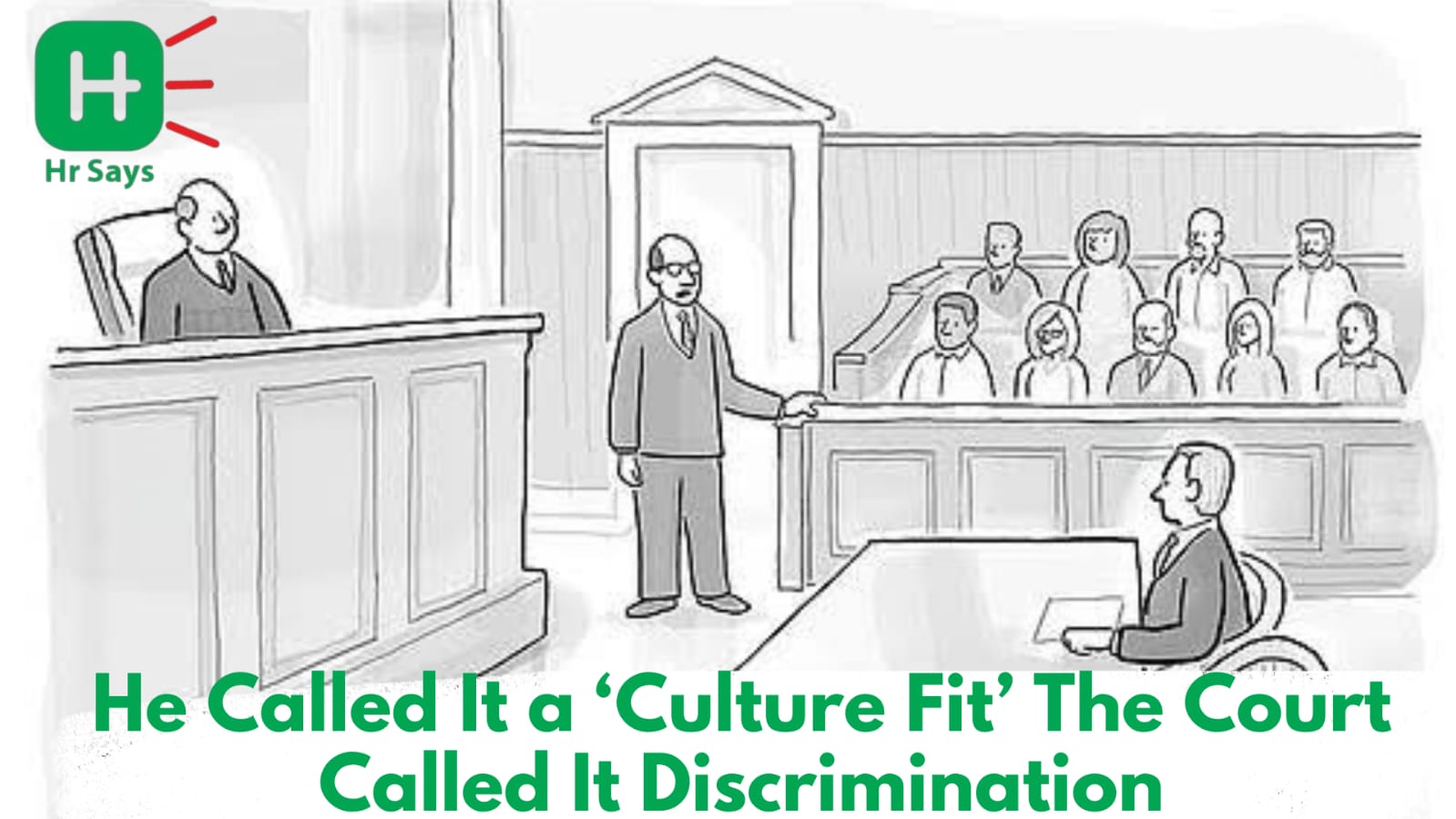He leaned back in his chair and shrugged. “She just wasn’t a culture fit,” he said. The interview panel nodded, a few sighs of relief around the room. No one had to explain further. No written rejection needed more than that two word phrase. Culture fit is the modern corporate term for a silent, sealed decision.
Weeks later, the same phrase made it to a courtroom transcript. But this time, it didn’t shield the company. It exposed it. The same words that felt harmless during the hiring round were now on record in a workplace discrimination case. And the judge didn’t hear “culture fit” they heard implicit bias, a lack of HR ethics, and a failure in compliance in hiring.
That’s the quiet danger of loaded phrases. In the hands of HR, they are codes to navigate fitment and values. But in the absence of accountability, they become masks. And in the eyes of the law, no mask holds when prejudice leaks through.
This wasn’t just one case. It’s a growing pattern. As hiring processes evolve and workplace discrimination laws grow sharper, courts are beginning to peel back the language of modern hiring. Phrases like “culture fit,” “gut feeling,” or “not our vibe” are increasingly coming under scrutiny for what they sometimes mean, unconscious bias, exclusion, or outright discrimination.
HR professionals have always known that culture is a fine line to walk. We are trained to look beyond resumes, to identify alignment with values, communication style, and team chemistry. But the question is whose culture are we protecting? Whose comfort are we prioritizing? And at what cost?
The danger begins when “culture fit” becomes a shortcut for sameness. When it’s used to quietly eliminate those who sound different, look different, or challenge the unspoken norms of an office. This is where hiring bias starts to wear the clothes of company values, and HR ethics start to blur.
Because when hiring managers say “she didn’t seem like a fit,” HR must ask: fit for what? Did she lack skills, or just familiarity? Did he not align with values, or did he simply bring a new voice to the table? It’s not easy. But it’s essential. Because HR compliance doesn’t just mean following labour laws it means asking uncomfortable questions when others would rather lean on familiar phrases.
Workplace discrimination doesn’t always arrive in loud, visible ways. Often, it hides in decisions made without documentation, in interviews guided by instinct, in feedback loops where similarity is rewarded and difference is sidelined. And “culture fit” becomes the soft curtain pulled over systemic exclusion.
The future of hiring demands more than good intentions. It demands rigor. Companies must begin to define culture not by comfort, but by character. Not by mirroring existing norms, but by welcoming challenge. True HR ethics lie in creating processes that ask more of us than the easy answer. And “culture fit” is often the easy answer.
The courts are catching up, but HR must stay ahead. Because the cost isn’t just legal it’s human. Every rejected candidate who never understood why. Every overlooked voice that could have redefined innovation. Every team that slowly begins to look, sound, and think alike until the company can no longer see its blind spots.
Hiring decisions must be backed by clarity, not coded language. If someone is not a fit, that must be defined in terms that are role specific, measurable, and defensible. “Did not demonstrate collaboration in group exercises” is different from “didn’t seem collaborative.” One is observed. The other is guessed.
HR professionals have the hard but necessary responsibility to question every phrase that could hide bias. To build hiring frameworks where decisions are tracked, justified, and periodically audited. To train managers to speak in evidence, not assumptions. And to lead the charge when culture is used as a weapon instead of a value.
This is not about removing human judgment from hiring. It’s about adding human responsibility. It’s about recognizing that hiring is not just about filling a position it’s about shaping a workplace. And workplaces shaped by bias no matter how subtle, end up fragile, homogenous, and eventually, exposed.
When that hiring manager said, “She wasn’t a culture fit,” he likely didn’t imagine that phrase would become Exhibit A. But it did. Because culture is not a defense when discrimination is the outcome. And HR cannot afford to let subjective comfort outweigh objective fairness.
It’s time we redefined what culture really means. Not shared hobbies or weekend plans. But shared respect. Shared ethics. Shared space for difference. That’s the culture worth fighting for and one that stands up in court, not just in corridors.
So the next time someone says, “Not a fit,” ask: for whom? Based on what? Compared to which standard? Because the line between preference and prejudice is thinner than we think and in hiring, it often shows up dressed as culture. And in case we forget, the courtroom doesn’t accept vibes. It demands evidence

 So the next time someone says, “Not a fit,” ask: for whom? Based on what? Compared to which standard? Because the line between preference and prejudice is thinner than we think.
So the next time someone says, “Not a fit,” ask: for whom? Based on what? Compared to which standard? Because the line between preference and prejudice is thinner than we think.












.jpeg)
.jpeg)

.jpeg)

.jpeg)


.jpeg)

.jpeg)

.jpeg)


